Perched high above the quaint Bavarian village of Hohenschwangau, Neuschwanstein Castle rises out of the Alpine mists like something conjured from a fairy tale. With its soaring turrets and snow-dusted spires, the castle is one of the most recognisable sights in the world—a monument to dreams, eccentricity, and the enduring allure of the Middle Ages.
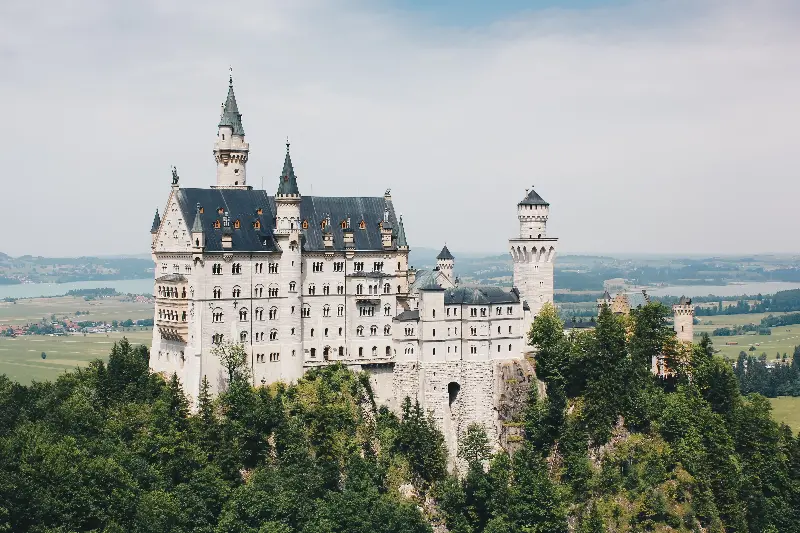
A Castle Born from Fantasy
Neuschwanstein Castle’s story begins with Ludwig II of Bavaria, a king so enamoured with art, music, and legend that the boundaries between fact and fantasy seemed to blur in his mind. Ludwig ascended to the throne in 1864 at the tender age of 18, and he quickly earned a reputation as the “Fairy Tale King”. He yearned for an escape from the constraints of politics and the rapidly modernising world around him.
His vision was to create a new kind of castle, one that would pay homage to both medieval romance and his favourite composer, Richard Wagner. Construction began in 1869, with Ludwig closely involved in every detail. He sketched designs, changed architects, and oversaw artistic choices down to the furnishings and murals. In effect, Neuschwanstein was less a practical fortress and more a theatrical set, a lavish backdrop for Ludwig’s imagination.
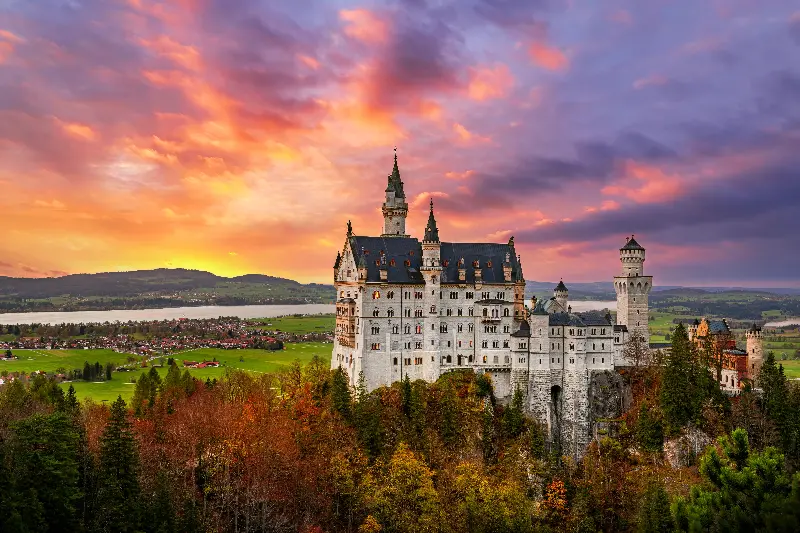
Innovative Design Meets Medieval Inspiration
Although it looks ancient, Neuschwanstein is a product of the 19th century, blending the aesthetics of medieval castles with cutting-edge technology for its day. The architect, Eduard Riedel, worked with the king to incorporate real medieval elements, such as towers, battlements, and a romanticised throne hall. Yet inside, the castle boasted the latest luxuries: running water, flush toilets, central heating, and electricity—a true marvel of engineering for its era.
Each room inside tells a story. The Singers’ Hall, modelled after the banqueting hall at Wartburg Castle, is adorned with murals depicting the legends that inspired Wagner’s operas. Meanwhile, the Throne Room, with its glittering mosaics and towering columns, was never even furnished with a throne, as Ludwig died before its completion. Every corridor, chamber, and balcony was designed to evoke an idealised vision of Germany’s past—one infused with myth, romance, and chivalry.
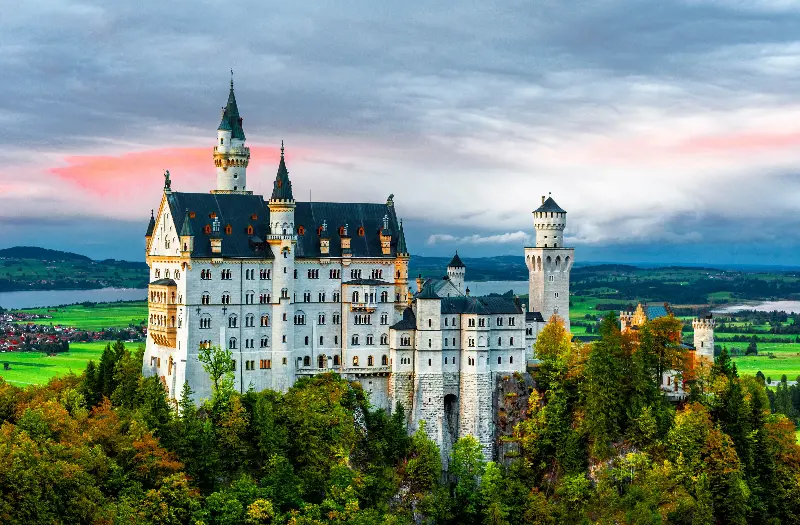
A Castle for One, Visited by Millions
Despite its grandeur, Neuschwanstein was never meant as a home for crowds. Ludwig, increasingly reclusive in his final years, lived there in isolation, often hiding away from his courtiers and advisors. He only spent a total of 172 days at the castle before his mysterious death in 1886.
Ironically, the castle opened to the public just weeks after Ludwig’s passing. Today, it welcomes more than 1.4 million visitors annually, making it one of Germany’s top tourist attractions. Travelers from across the globe are drawn to its dreamlike silhouette—especially when seen from the nearby Marienbrücke bridge, offering the most iconic view of the castle perched amidst mountain and forest.
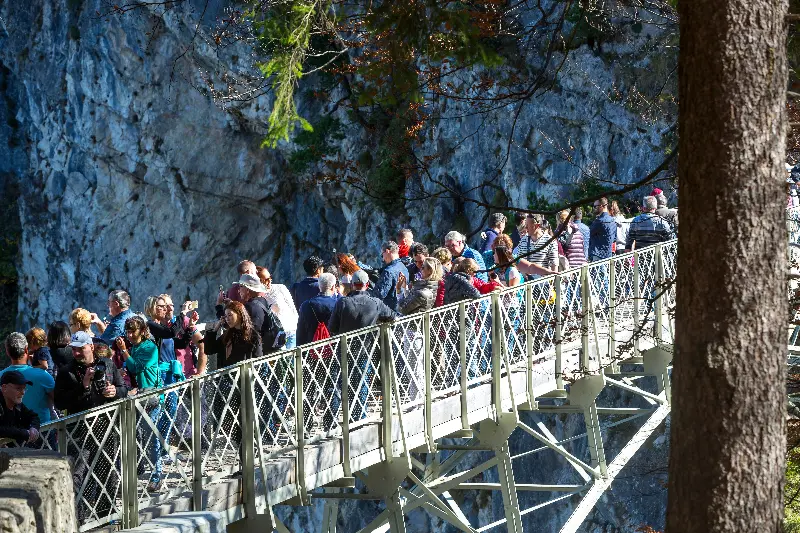
Disney’s Inspiration and the Castle in Popular Culture
For many, Neuschwanstein sparks a sense of wistful nostalgia even if they’ve never set foot in Bavaria. Its ornate geometry and fantastical profile served as the inspiration for Walt Disney’s Cinderella Castle—and later the Sleeping Beauty Castle at Disneyland. Disney artists studied images of Neuschwanstein when crafting their signature fairy tale architecture, ensuring its silhouette became embedded in the visual language of childhood dreams.
The castle has also made numerous appearances in film and literature. Movie buffs might recognise it from films like “Chitty Chitty Bang Bang” and “The Great Escape”. Its enchanted towers and whimsical interiors are now synonymous with the idea of fairy tale castles worldwide.
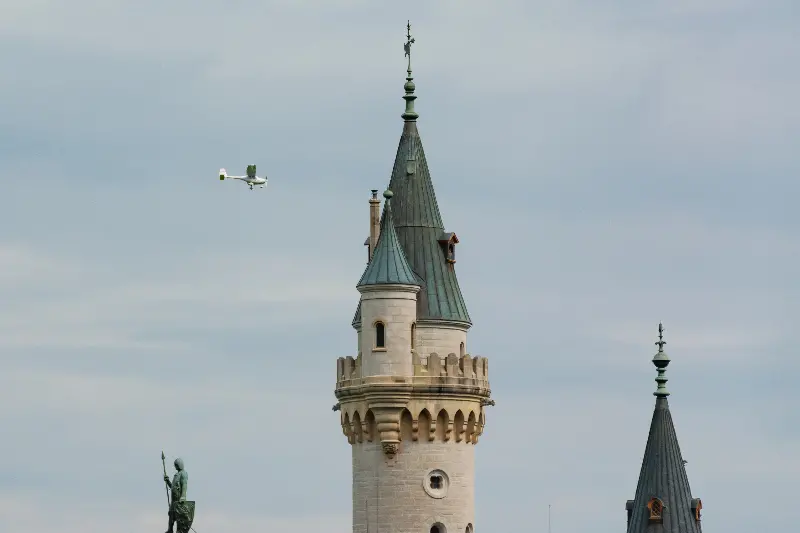
Myths, Mysteries, and Untold Stories
The legend of Neuschwanstein is not without its shadows. King Ludwig’s mysterious death—drowning in Lake Starnberg under circumstances that remain the subject of speculation—has fuelled countless theories and a lasting sense of intrigue. Some believe he was declared insane and deposed unjustly by political rivals; others suggest deeper conspiracies.
Locals still whisper tales of Ludwig’s ghost wandering the castle halls on moonlit nights, and the story of his extravagant obsession continues to inspire both admiration and a touch of melancholy. Yet despite the drama, no treasure troves or secret passages have been confirmed within the castle. What endures is the sense of wonder that Ludwig’s vision evokes—a testament to art, passion, and an irrepressible belief in the power of dreams.
An Enduring Inspiration
Today, Neuschwanstein Castle exemplifies more than just architectural splendour. It stands as a symbol of the creative spirit and the eternal quest for beauty, regardless of practicality or reason. Its silhouette has graced everything from postage stamps to video games, and its story fastens itself to the hearts of millions.
Stepping across the drawbridge, visitors enter not only a bygone era but the mind of a king who refused to give up on his dreams, no matter the cost. A timeless fairy tale realised in stone, Neuschwanstein continues to cast its spell—reminding us all that magic still lives in the mountains of Bavaria.
